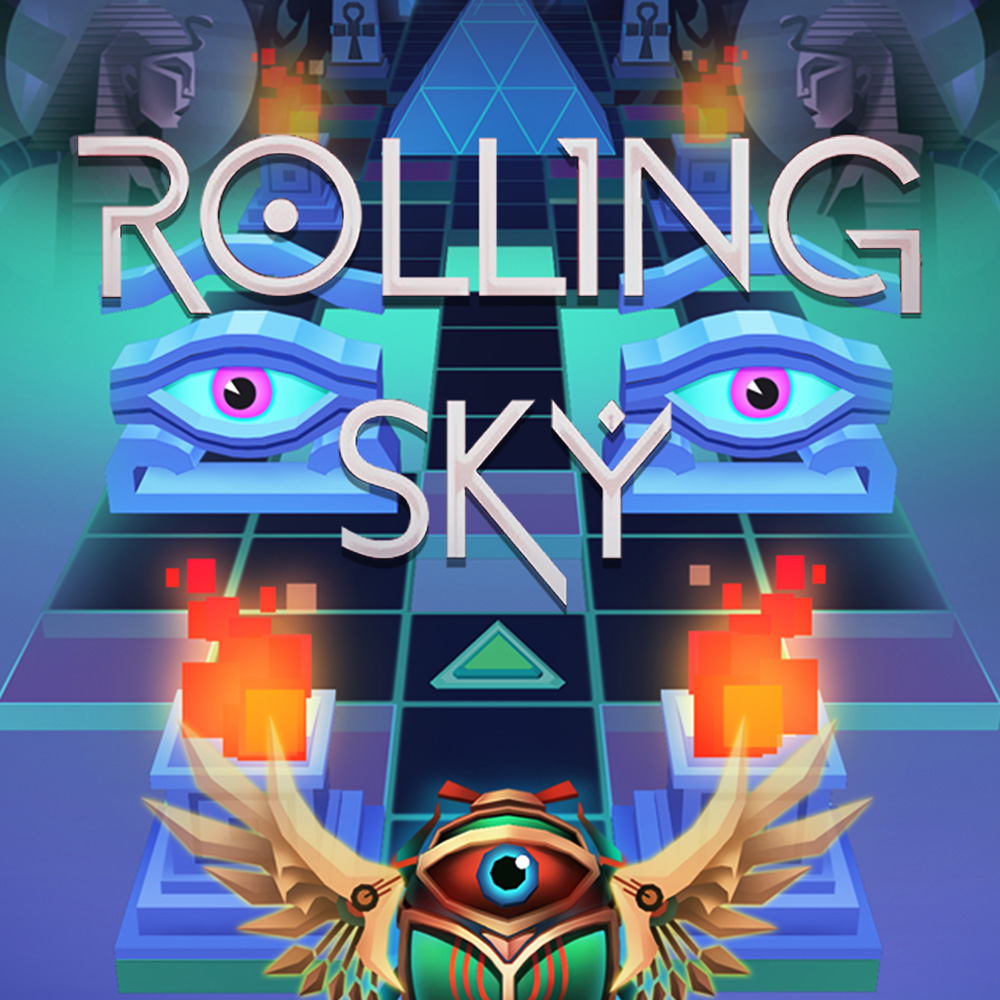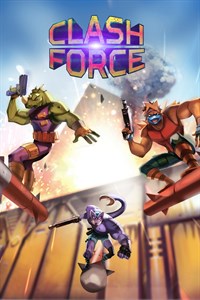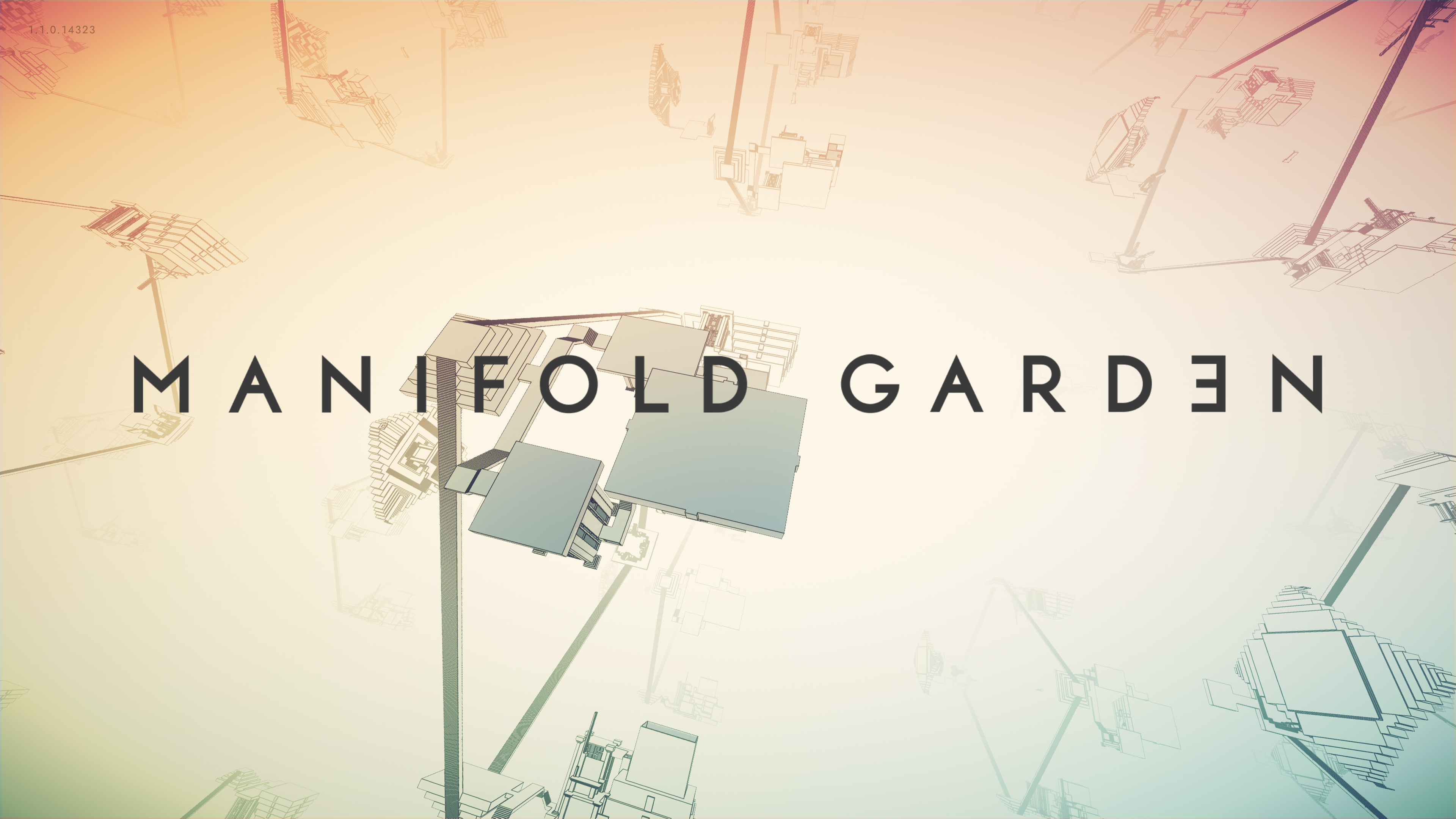Apex Construct Review
Game Details
Title: Apex Construct
Developer: Fast Travel Games
Publisher: Fast Travel Games
Website: https://www.fasttravelgames.com/apex-construct/
Genre: Action, Adventure, FPS
Platform: Oculus Quest
Audience: Everyone 10+
Release Date: 21-05-2019
Price: $19.99– Rapid Reviews UK were very kindly provided with a review code for this title.
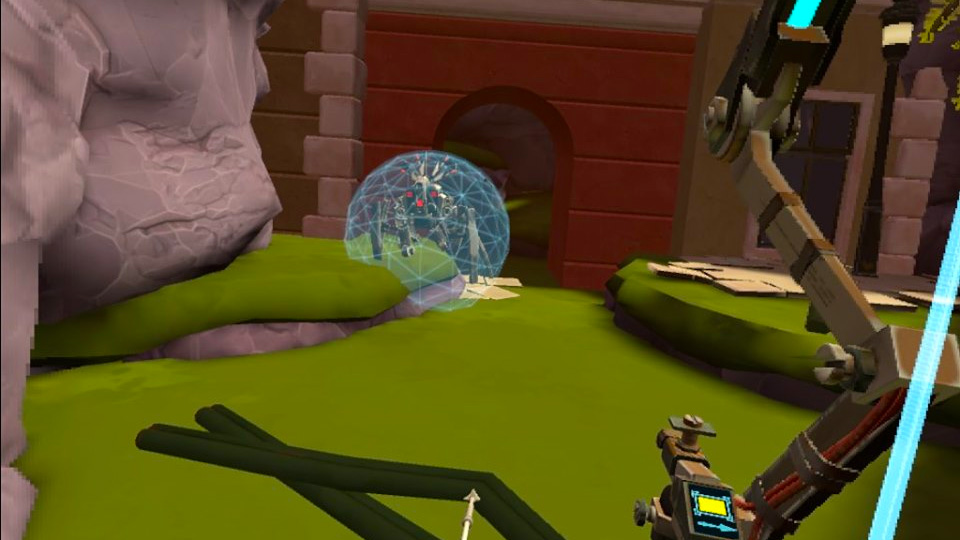
The first time I saw the promotional materials for Apex Construct, I was reminded of the PlayStation 4 exclusive, Horizon: Zero Dawn. With the trailer emphasising the bow & arrow weapon and the mechanical animals that succumb to it, that impression was apt but false. After playing it for a bit, I came to realise that Apex Construct was far less like the game mentioned above and more in-line with games like System Shock 2 and Bioshock, though only superficially.
You play as the only human on Earth, summoned from the void by a rogue AI in an effort to overthrow his adversary and return the planet to its former caretakers – at least, that’s what he’s telling you. The other side of this conflict has their interpretation of what is taking place, but it doesn’t matter, you have no choice in any of this and will be doing what you’re told. That means transversing the world many times over, collecting key cards, and shooting robot crabs with arrows, ad infinitum.
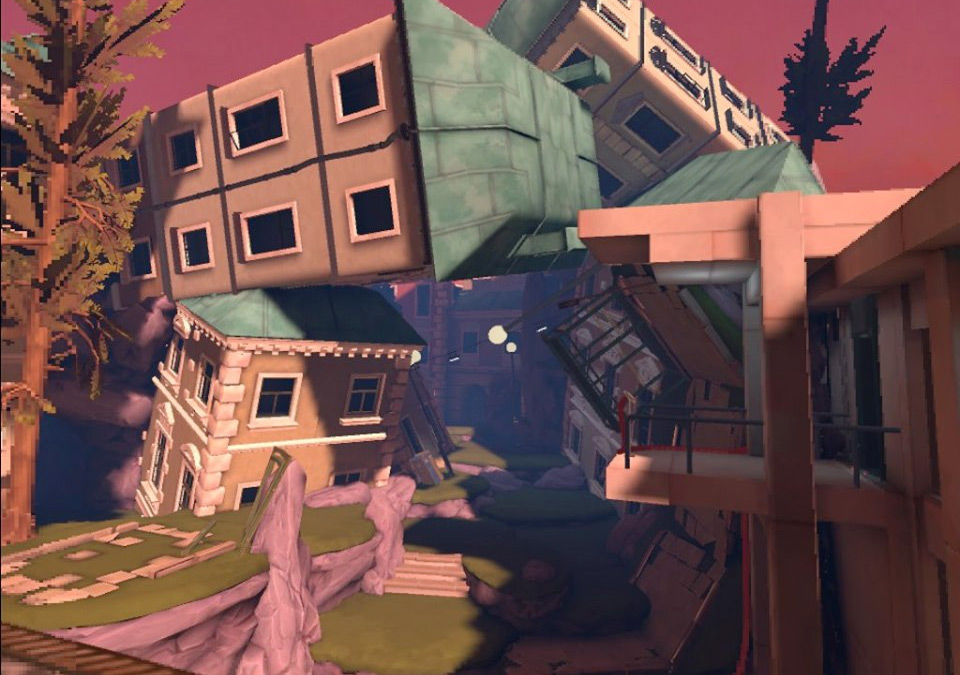
The world itself is constrained to a handful of buildings connected by small outdoor spaces and is quite nice to explore at first go. Whatever conspired before your arrival was cataclysmic, producing familiar landscapes but consisting of a hodge-podge of modern marvels twisted, bent, and scattered – a world seemingly torn asunder and smashed back together again. It’s as beautiful as it is unsettling. The sense of wonder fades though, as you are forced to keep coming back to the same places looking to open doors previously locked or searching for passwords to gain entry into new areas.
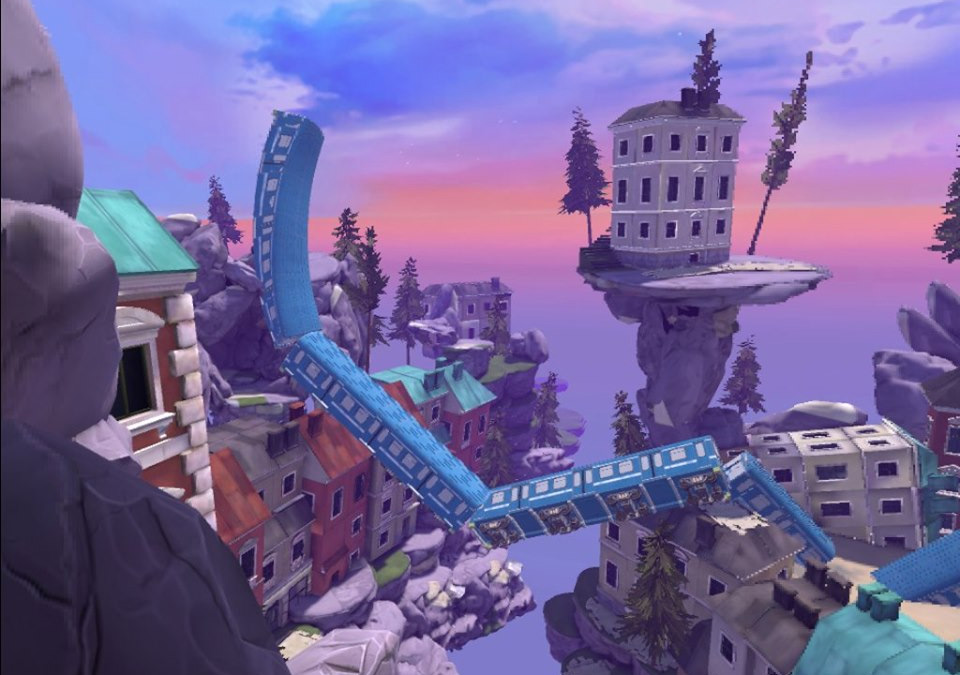
With the game taking place in a corporate campus, most of the interiors look the same with a few standouts to mix things up and visiting them over and over can get a tad stale. The developers did an admirable job though of utilizing the limits given by breaking up the play area with a myriad of staircases and lifts, allowing for catwalks and overhangs that provide verticality and new perspectives to familiar paths as well as different angles in which to engage the enemy. The density of the level design is furthered by rooms that are dressed accordingly and with interactive elements in most. Art hangs above the terminals and cabinets that line the walls and furniture chokes already tight spaces. I felt it oddly satisfying to have to crouch to open a file cabinet and then crouch further still to see to the back and pull out whatever item was hiding in there.

Tangibleness (that’s a word, I checked) abounds in Apex Construct. Doors open by pulling on them or by flashing a keycard at a data point. Teacups, boxes, chairs, etc. can all be moved about. In a stroke of genius, the item supply store is a soft-drink vending machine that operates like a real-world vending machine. The many terminals you’ll come across are accessed with a typeable keyboard. All of this comes together to make a believable world that feels ‘lived in’ and solid.
This title isn’t without issue though. Tracking can be a problem at times. Doorways can occasionally hinder your movement, and you’ll need to teleport out of them to get through while stairways are teleport only for the most part. Objects placed in the world may be in a different place when you return to them and more than once I dropped an item to the ground only to have it disappear entirely and force me to restart the game. For the most part, everything works as intended, but when it doesn’t, it can be frustrating and immersion breaking.
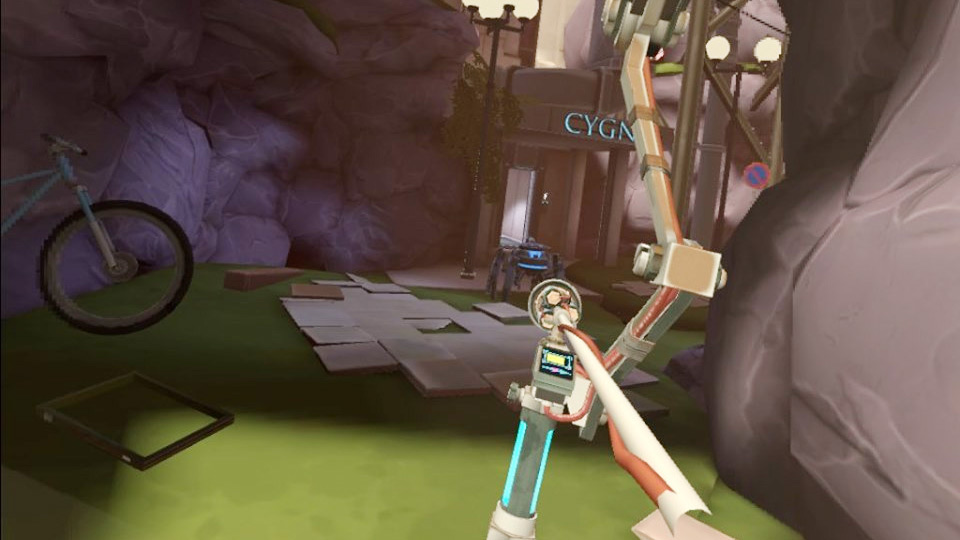
Your bow, however, works flawlessly and feels good to use. It services as both a shield and a weapon and can be upgraded in power and durability. The standard arrow has unlimited usage, letting you fire off as many as you like and as quickly as you can but only do a modicum of damage. As you progress in the game, two additional arrow types become available; an electric charge that temporarily disables enemy shields and stuns, and a bomb arrow that explodes a few seconds after firing. Usage of the special arrows is limited in quantity, and the time it takes to refill once depleted, but both of these are upgradable.

Rounding out your weapons set are grenades and mines. Both are hard to come by and aren’t readily available until the latter portion of the game which is a shame because you are going to need all the help you can get destroying the robot crab enemies. They are machine-like in movement, slow and deliberate, right up until you start firing on them. Then they have the deftness of some jungle cat/ballerina hybrid, dodging nearly every arrow with lightning quick agility. My guess is the Developers did this to pad the length and degree of difficulty of the game. Either way, it’s completely unnecessary, in my opinion.
The scant number of enemies in this game would be glaringly obvious if it weren’t so short. Aside from the mechanical spider crabs, there are a few others; the small and stationary turret bot, a robotic dog-type enemy that shows up maybe twice and doesn’t engage with you directly, and a single boss enemy.

Character agency in Apex Construct is clear; return to the ‘void’ and cease to exist or run errands for your AI master – not a difficult choice to make. Player agency (the reason YOU & I are playing the game to its conclusion) is found in the many terminals and notepads you come across in the world. The character that previously came to you, whom I assume failed to stop the “bad guys” from doing whatever it is they’re trying to do, left copious amounts of notes and diary-like entries pondering what exactly happened to the world. Your new master’s motivations, her and your role in it, and what it means if she succeeds or fails. These are a great source of narrative exposition that compelled me to see the game to its finale. I was excited to read each new entry I came across and puzzle together the mystery before me.

Alas, the Developers failed to include any satisfying conclusion to the breadcrumbs they had been laying out for you from the beginning. Sure, there’s an ending, but it was one of the most disappointing and lacklustre finishes I have ever experienced in any media; games, film, or otherwise. The final boss is simply a repeat of the boss from the previous level. The antagonist of the game is a no-show, and as stated previously, there is no closure to the meaning of any of it; just a pat on the back and that’s it: game over. I honestly felt cheated upon completing it.

At its core, Apex Construct is a fetch quest game; navigate the labyrinth of corridors and rooms to locate the McGuffin which when found opens a new area and adds a new item to find, repeat. This can get tedious and boring if not handled correctly, and it’s up to the developers to make it exciting and engaging. Apex Construct mostly accomplishes this with a game this is filled with suspense and intrigue and very little hand-holding but misses it at nearly every facet.
With a bit more care and polish, this could have ended up as one of the best games in all of VR. Maybe more time and/or money would have allowed the developers to deliver a more robust game worthy of the initial pitch but as it is it just sputters out, limping to the finish line in the most egregious of ways.
Rapid Reviews Rating

You can purchase Apex Construct for the Oculus Quest via the following link, https://www.oculus.com/experiences/quest/2096570290365140/


